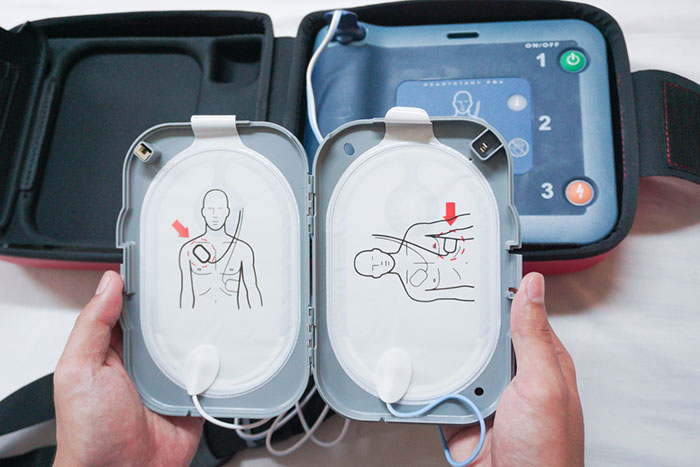Sudden cardiac arrest (SCA) and heart attacks are two life-threatening cardiac events that affect many Australians every day and while both involve the heart, they differ in how they affect the body and how they should be treated. Understanding the distinction between the two, and why having access to a defibrillator can be the difference between life and death, is vital to increase the chance of survival.
Sudden Cardiac Arrest vs. Heart Attack
A heart attack occurs when blood flow to part of the heart is blocked, usually by a clot or narrowed arteries, depriving the heart muscle of oxygen. This is a “plumbing” issue – damaged tissue causes chest pain, shortness of breath, and other warning signs. While serious, heart attacks typically give some time for intervention.
On the other hand, sudden cardiac arrest is an “electrical” problem. The heart’s electrical system malfunctions, causing an irregular heartbeat. In an instant, the heart stops pumping blood to the brain and other vital organs, leading to unconsciousness and the cessation of normal breathing. Without immediate intervention and the use of an AED/defibrillator, SCA is almost always fatal within minutes.
The Urgency of Using a Defibrillator
A defibrillator can save lives in both cases, but it’s absolutely critical for treating SCA. During a SCA, every minute truly counts. When the heart stops beating effectively, it often enters a chaotic rhythm known as ventricular fibrillation – this is where a defibrillator comes into play and it is almost always the difference between life and death.
Defibrillators work by delivering an electric shock to the heart, allowing it to reset and potentially restore a normal rhythm. The critical window for effective intervention is within the first few minutes following cardiac arrest. Studies have shown that for every minute that passes without defibrillation, the likelihood of survival decreases by approximately 10%. This stark statistic underlines the importance of having access to defibrillators in public spaces.
There are two main types of defibrillators – automated external defibrillators (AEDs) and manual defibrillators. AEDs are designed to be user-friendly, providing voice prompts to guide users through the process. Manual defibrillators require trained medical personnel to operate them effectively and are typically found in hospitals or ambulances.
Understanding how vital these devices are – and advocating for the presence of AEDs in schools, workplaces, and community centres – can help save lives when seconds matter most.
Be Prepared – The Importance of Having Access to a Defibrillator
Being prepared for sudden cardiac events is critical, and having a defibrillator readily available can make a significant difference in these emergency situations. Sudden cardiac arrest can strike without warning, and the immediate response of bystanders is vital to increase the chances of survival.
By creating awareness about the importance of defibrillators and encouraging preparedness, we can enhance our ability to respond effectively during critical moments. Being proactive today could save a life tomorrow!
Looking for the best defibrillator for sale for your home or workplace?
Safety Dave is Australia’s favourite destination for all things safety – we supply the highest quality portable defibrillators, first aid kits, fire equipment, TPMS and reversing cameras so that every Australian can be safer on the road, at home, at work, or wherever they need to be.
Shop online with us today or reach out to our safety experts by calling 1800 072 338.


